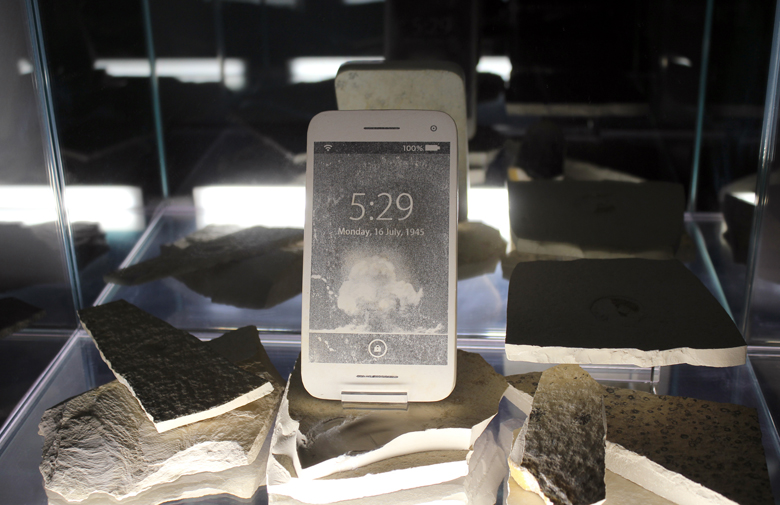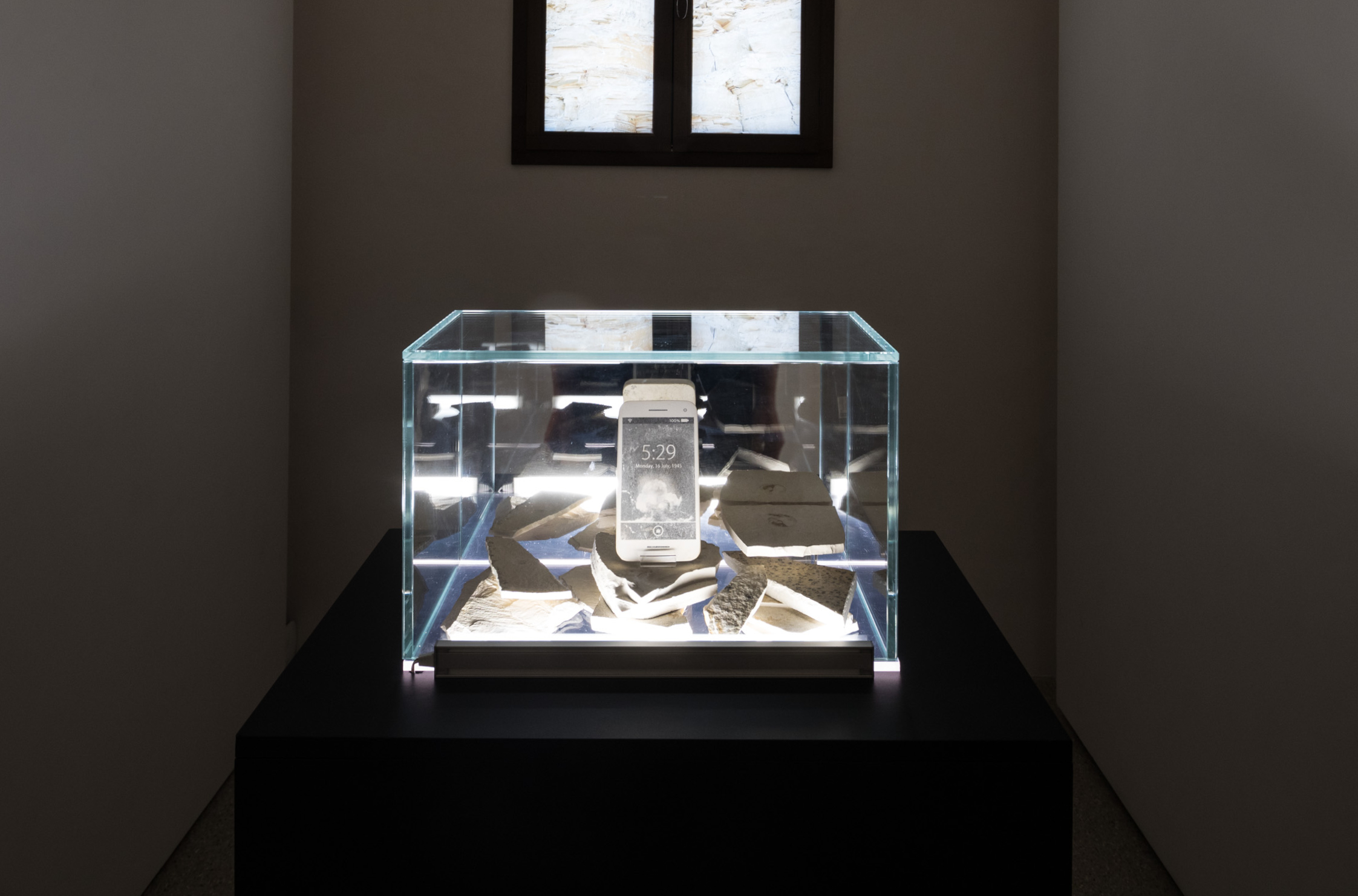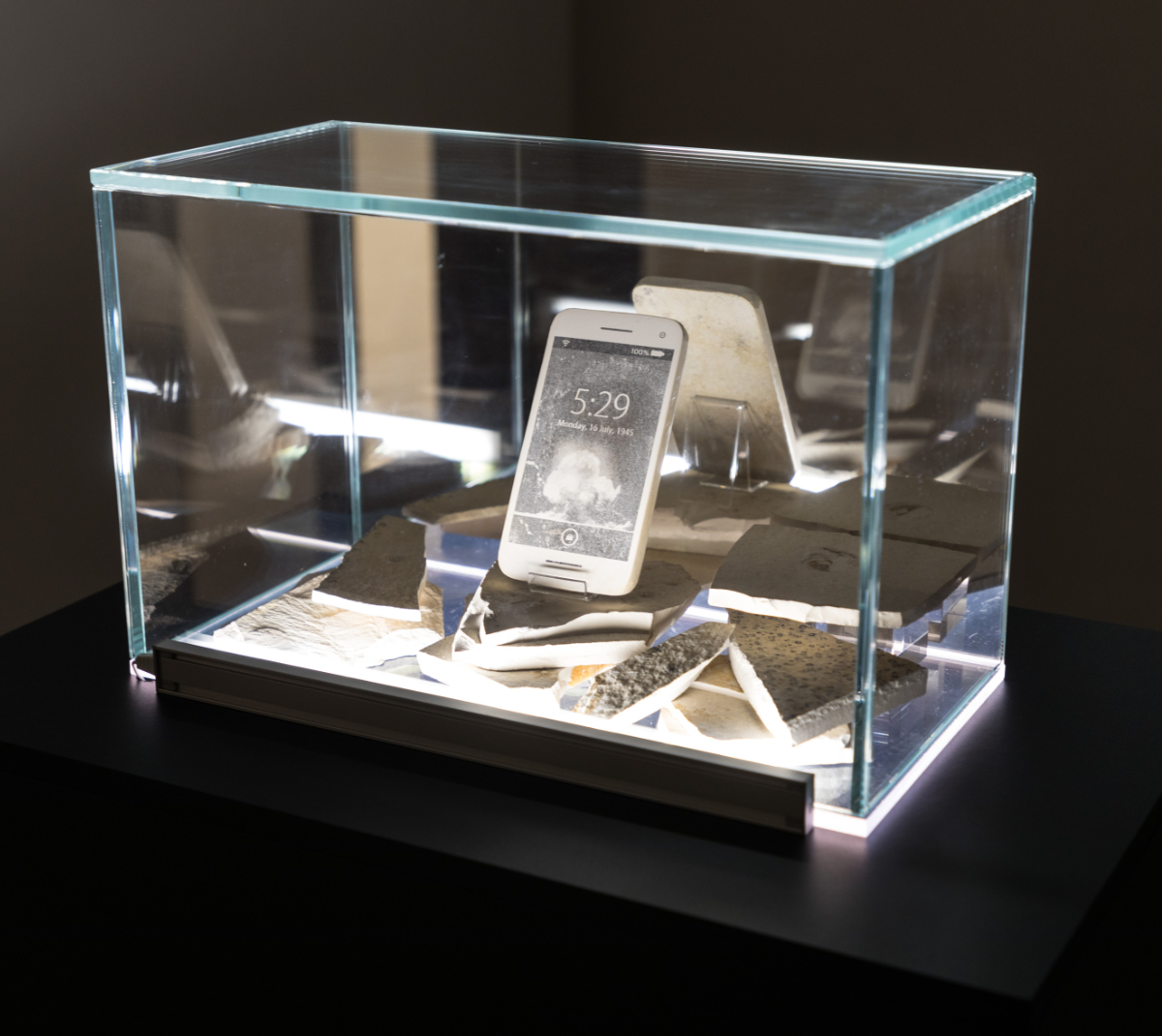WORKS /
Héritage #16071945

Installation view of Adoka Niitsu's solo exhibition "Héritage" at Galerie Hors-Champs, Paris. June 1, 2017 - June 20, 2017. Photograph by © Adoka Niitsu



Adoka Niitsu, Héritage #16071945, 2017
Mixed Media Installation with Lithographic Limestone of Solnhofen and Eichstätt (Bavaria in Germany), Fossils, LED Neon light, Mirror, Plexiglas, Glass box
Dimension of the stone : 14.5 x 7.5 x 0.9 cm (5.7 x 2.95 x 0.35 in)
Glass box L20 x W40 x H25 cm (7.8 x 15.7 x 9.8 in)
Image source : The Trinity test detonation photo by Jack Aeby / Public Domain
Installation view of the exhibition "I Say Yesterday, You Hear Tomorrow. Visions from Japan" at Gallerie delle Prigioni, Treviso, Italy. Curated by Suzanna Petot. July 12, 2018 - November 25, 2018.
Photograph by © Marco Pavan / Gallerie delle Prigioni
Read more
The Power of image
Invented by the German actor and playwright Alois Senefelder in 1798 and popularized in the early 19th century, the lithographic technique made possible the reproduction of large numbers of images. Limestone, the material used for lithographic plates, is also a medium for recording fossils and conveying the history of the earth.
Reproduce and share.
Record and preserve.
After various experiments, Niitsu began to create a series of smartphone-shaped pieces that display the most important and constantly thought-provoking images of human history.
Niitsu could not forget about the strong image of the photograph of the world's first atomic bomb test conducted by the U.S. Army in New Mexico on July 16, 1945, as part of the Manhattan Project. Niitsu's birthday coincides with the date of the first test of the atomic bomb.
Nicknamed "The Gadget," the bomb exploded at 5:29:21, with energy equivalent to about 25 kilotons of TNT. At this moment, the nuclear age had begun. This nuclear development project was carried out in secret, and this photograph of the explosion, taken by environmental physicist Jack Aeby, about two weeks before the atomic bombings of Hiroshima and Nagasaki, was not shared at the time.
In her work, the explosion image is displayed on a smartphone made of limestone, like a locked standby screen. In today's age of instantaneous image sharing, this stone gives us a long time frame for social thinking.



